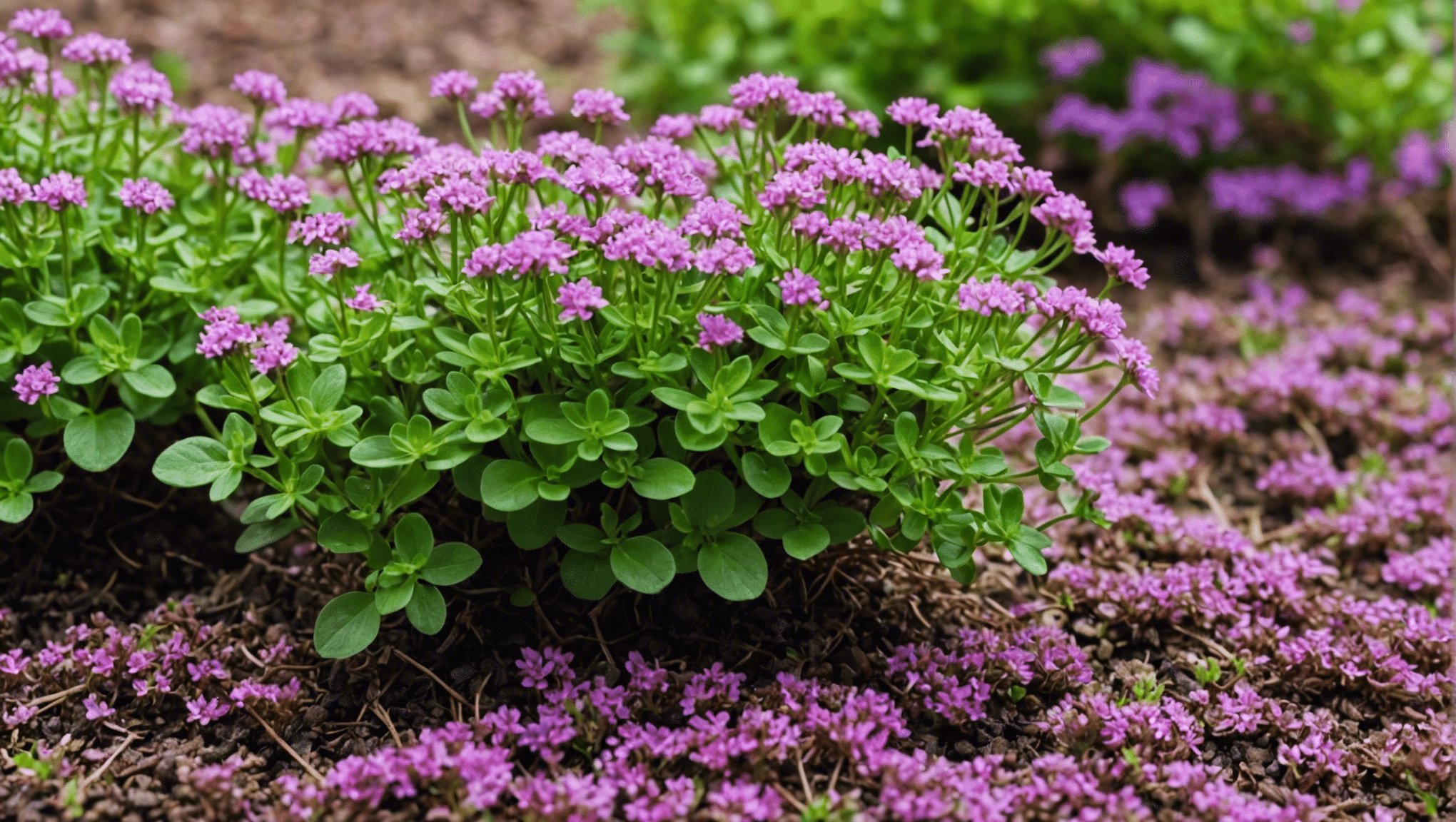Red creeping thyme, known scientifically as Thymus serpyllum, is a resilient and versatile ground cover that embellishes gardens with its vibrant crimson blooms and robust aromatic leaves. Successfully planting this herb not only enlivens your garden aesthetics but also attracts pollinators, making it a valuable addition to any gardening space. This detailed guide will walk you through the intricacies of planting, nurturing, and benefiting from red creeping thyme.
Understanding Red Creeping Thyme
Before diving into the planting process, it’s vital to understand the growing conditions and characteristics of red creeping thyme. This perennial herb thrives in full sun and well-drained soil. It is drought-resistant, making it an excellent choice for low-water gardens. Its flowers bloom from early to mid-summer, providing a long-lasting display of color. Red creeping thyme is not only cherished for its appearance but also for its ability to withstand foot traffic, making it perfect for use in pathways and patio pavers.
Selecting the Ideal Location
Choosing the right spot for planting is crucial for the success of red creeping thyme. The location should offer at least six hours of direct sunlight. Soil drainage is equally important; poorly drained soil can lead to root rot and other diseases. If your garden soil is heavy or clayey, consider improving drainage by adding sand or organic materials like compost to enhance its structure and nutrient content.
Preparing the Soil
Preparing the site involves a few steps to ensure the soil is conducive to the growth of red creeping thyme. Start by clearing the area of weeds and other debris. Perform a soil test to check for pH levels and adjust accordingly. Red creeping thyme prefers a neutral to slightly alkaline pH. Incorporate organic materials to enrich the soil, ensuring your thyme will have all the nutrients it needs for robust growth.
Sowing Red Creeping Thyme Seeds
When sowing the seeds, timing and technique are everything. The best time to plant red creeping thyme seeds is after the last frost in spring or during fall. This timing allows the plants to establish themselves under moderate temperatures. Here are the steps to planting the seeds correctly:
- Scatter the seeds over the prepared soil surface.
- Press them lightly into the soil, but do not cover them deeply; thyme seeds need light to germinate.
- Water gently to moisten the soil, being careful not to wash away the seeds.
- Maintain consistent moisture until germination, which typically occurs within two to three weeks.
Patience is key, as thyme seeds can sometimes be slow to germinate.
Caring for Your Thyme Seedlings
Once your thyme seedlings emerge, ongoing care is vital to develop healthy, expansive mats of red creeping thyme. Ensure the plants receive regular watering, especially during prolonged dry spells. However, be sure not to overwater, as thyme is drought tolerant and excessive moisture can harm the plants. Once established, red creeping thyme requires very little maintenance. You might consider a light fertilization annually, though excessive feeding can dilute the fragrance and flavor of the thyme.
Pruning is not typically necessary, but to encourage thicker growth, you can trim back the plants after the first year. This will promote more dense, lush mats. As an added benefit, pruning gives you fresh thyme leaves, which can be used in cooking or as a fragrant addition to potpourris and other home décor.
Common Questions About Planting Red Creeping Thyme
Q: How long does it take for red creeping thyme to cover an area?
A: Generally, it takes about one season for red creeping thyme to establish itself and begin spreading. Full coverage can take 2-3 years, depending on growing conditions and care.
Q: Can red creeping thyme be grown in containers?
A: Absolutely! Red creeping thyme adapts well to container gardening. Ensure the container has adequate drainage holes, and use a well-draining potting mix.
Q: Is red creeping thyme resistant to pests and diseases?
A: Red creeping thyme is notably resilient and does not suffer from many pest issues. However, good air circulation and proper planting spacing can help prevent any fungal diseases.
Planting red creeping thyme can transform your garden paths, borders, or even rocky spaces into beautiful, fragrant areas that captivate the senses. With minimal care requirements and high resistance to drought, it’s an excellent choice for both novice and experienced gardeners who wish to add a charming ground cover that doubles as a culinary herb.












